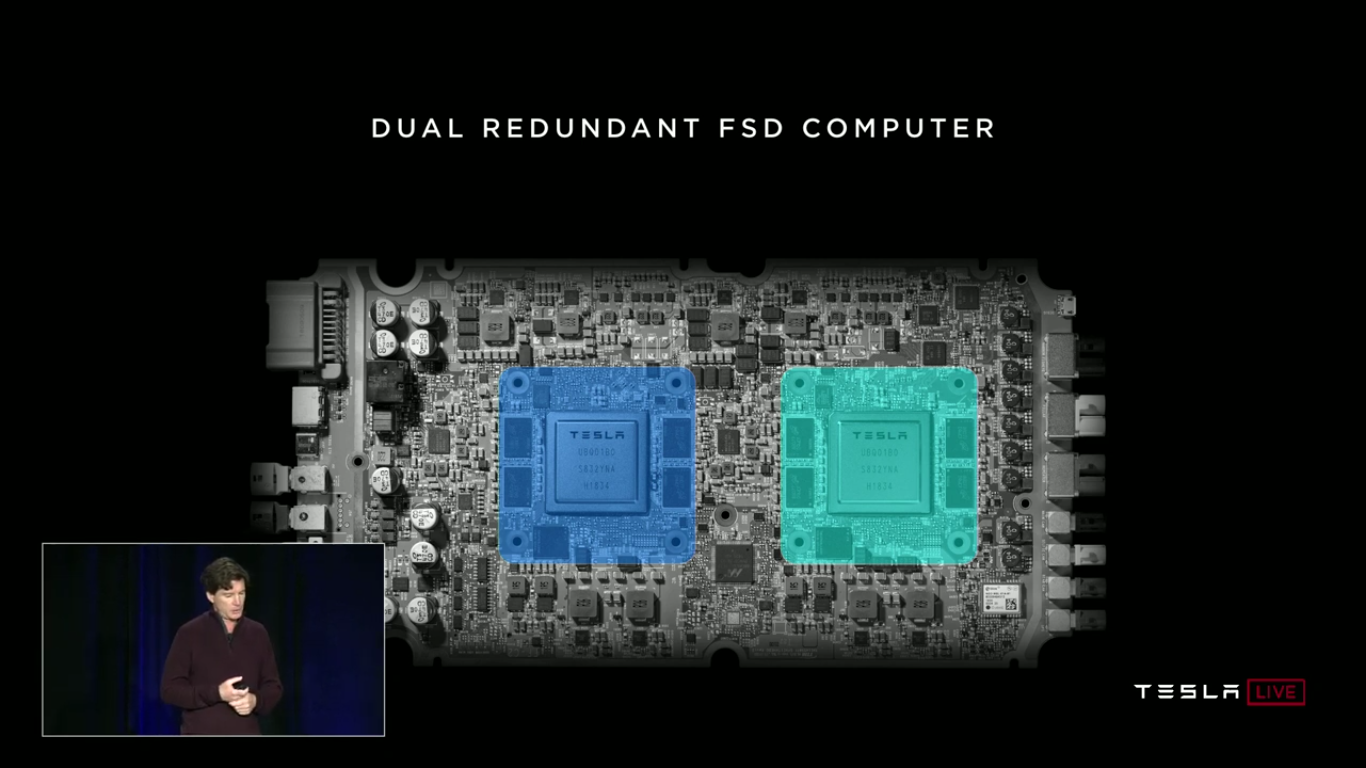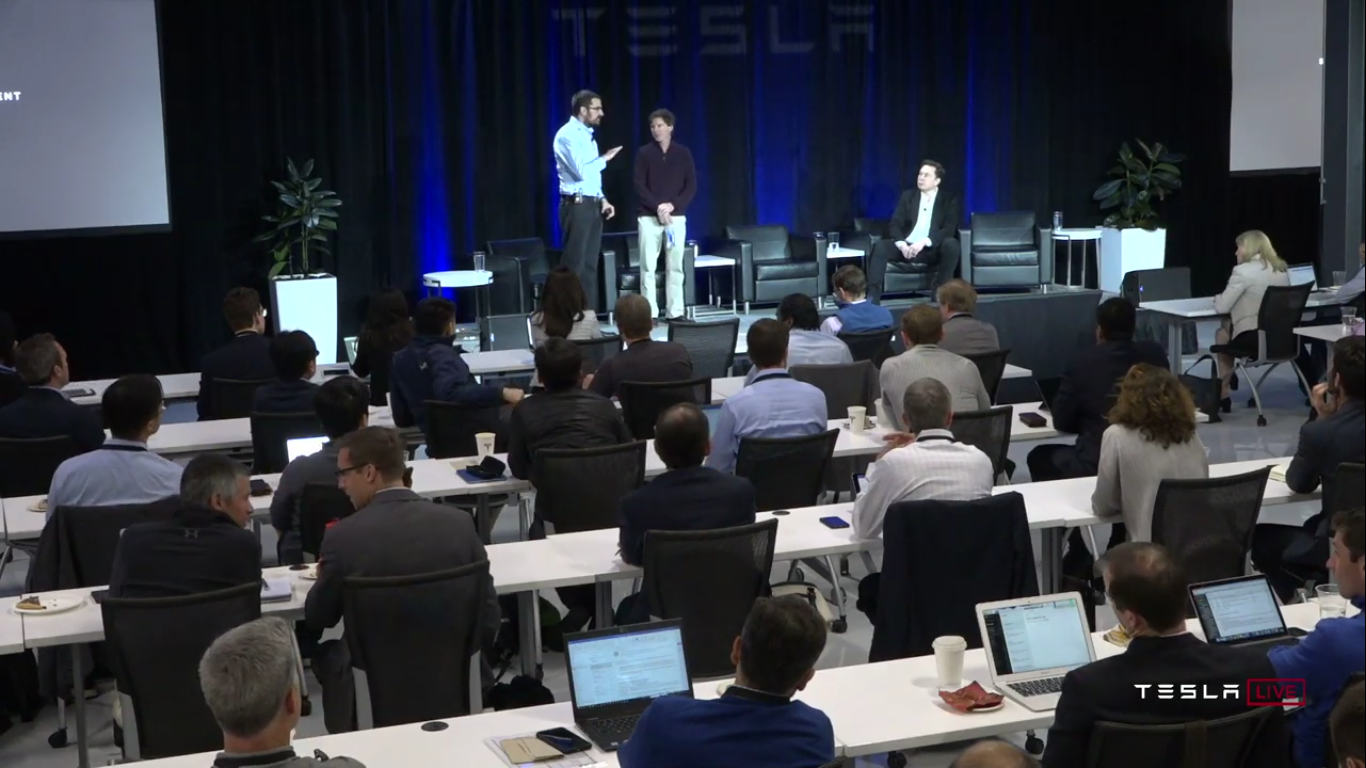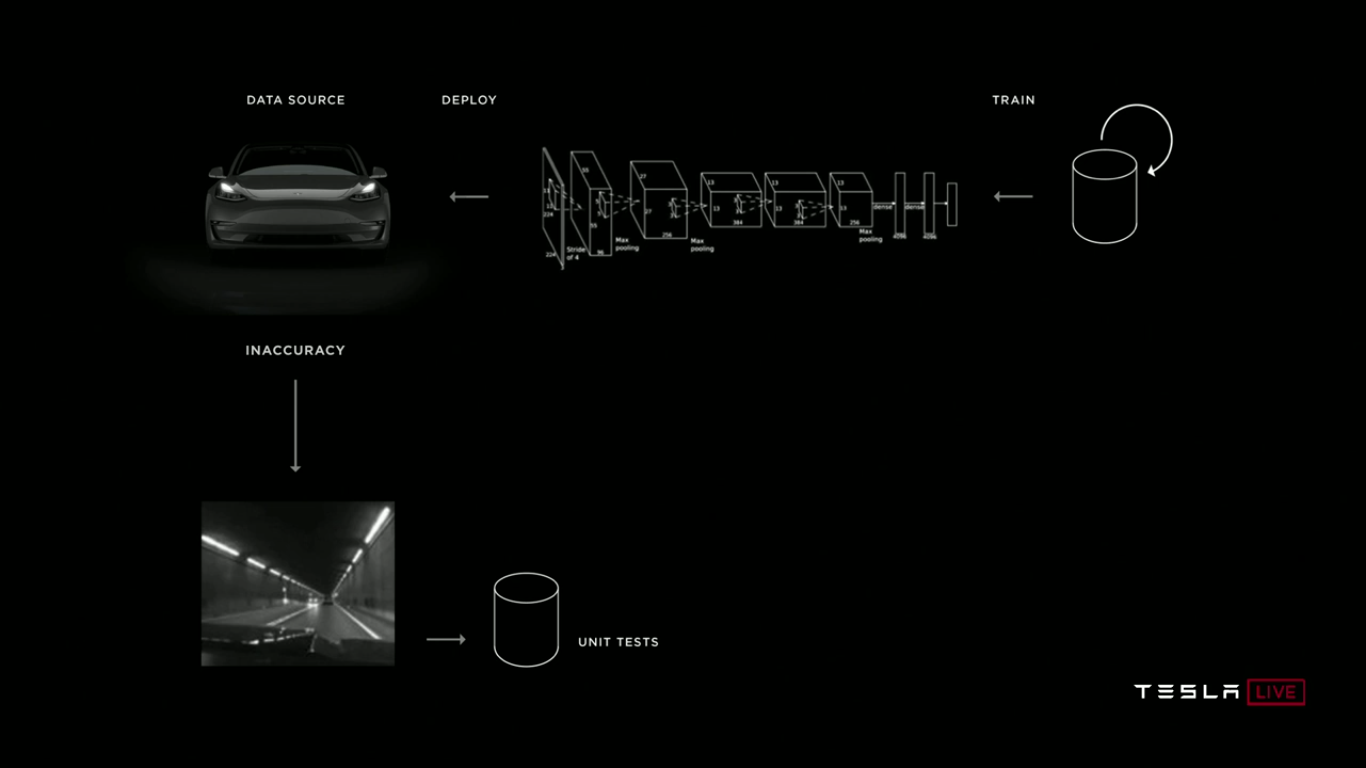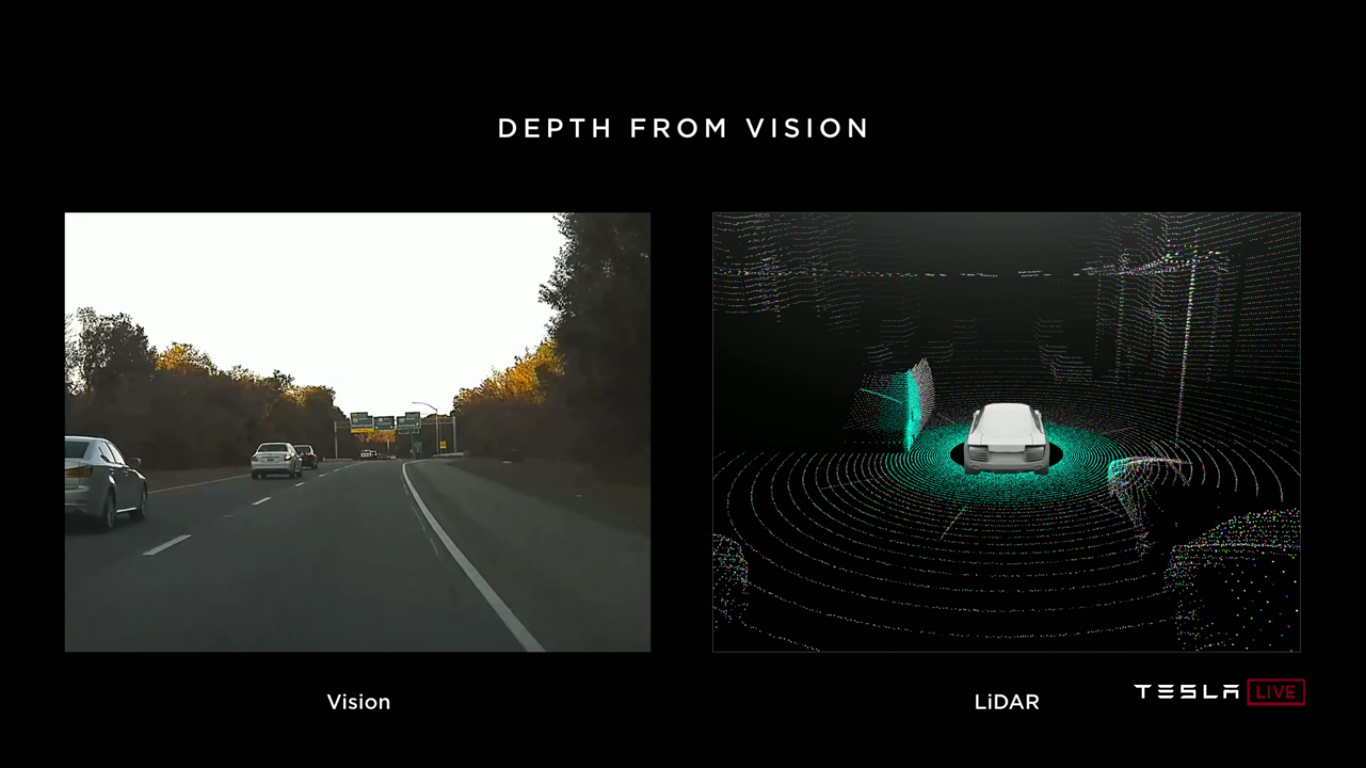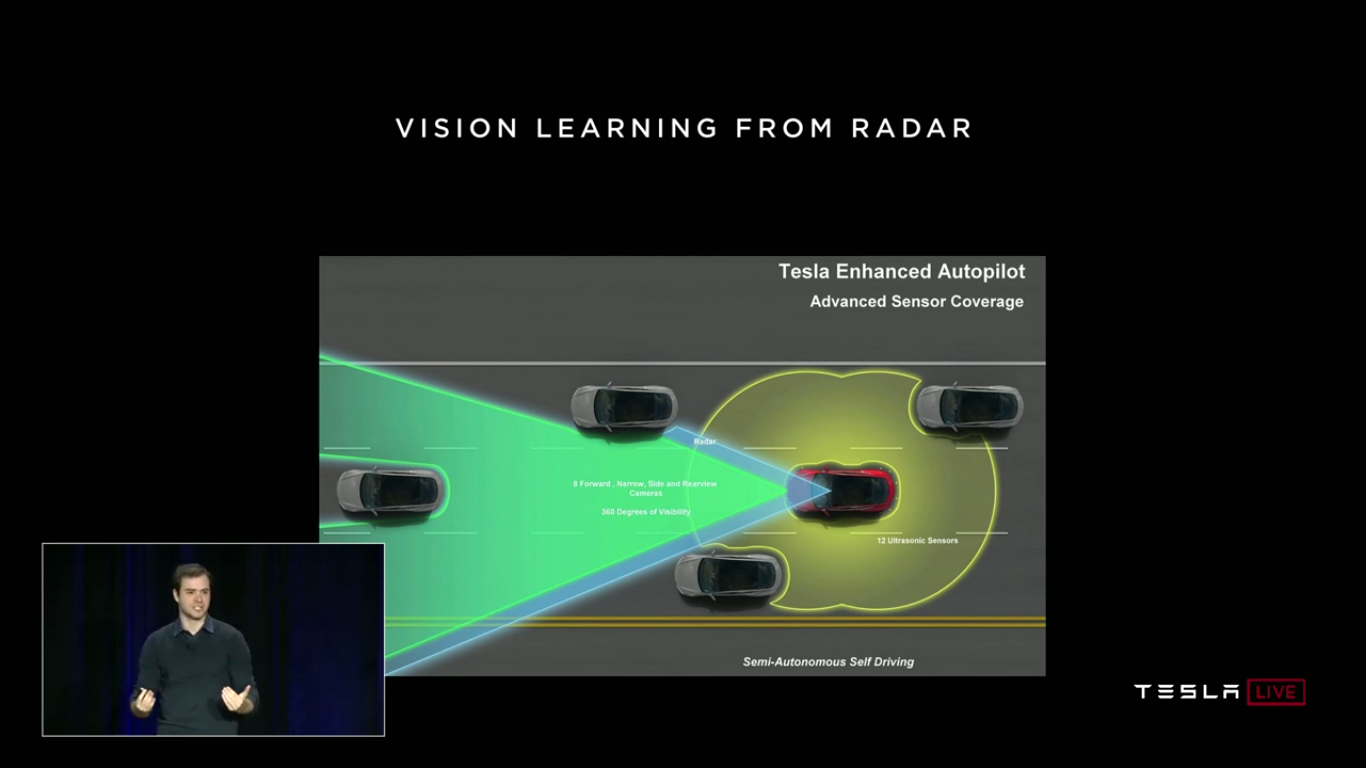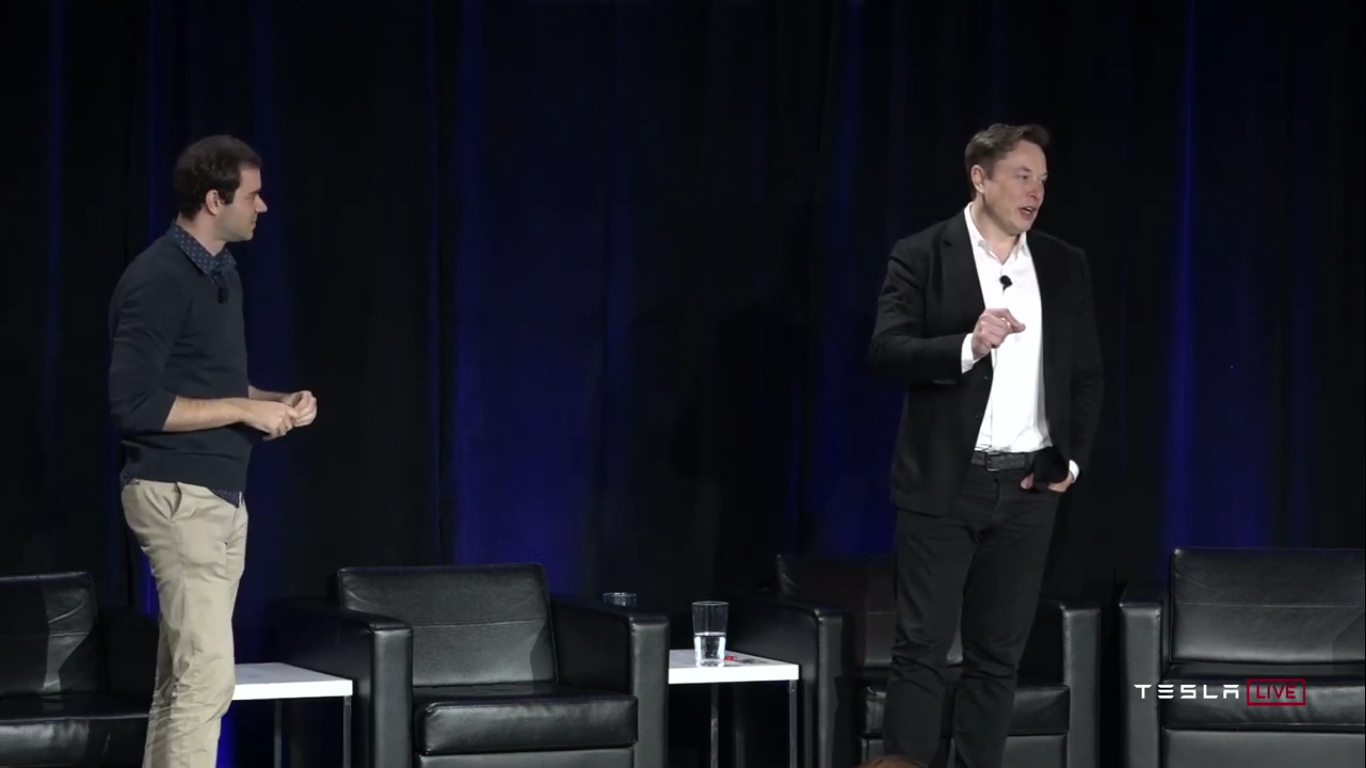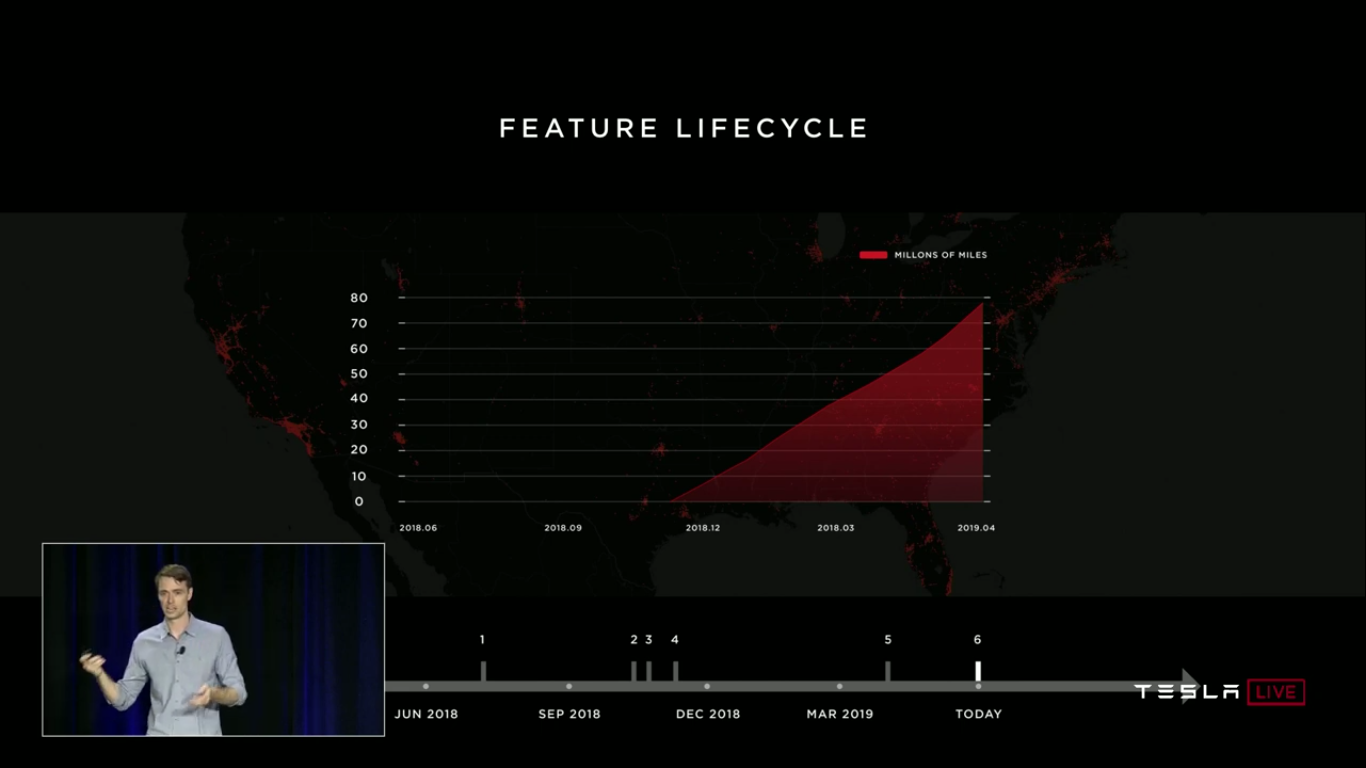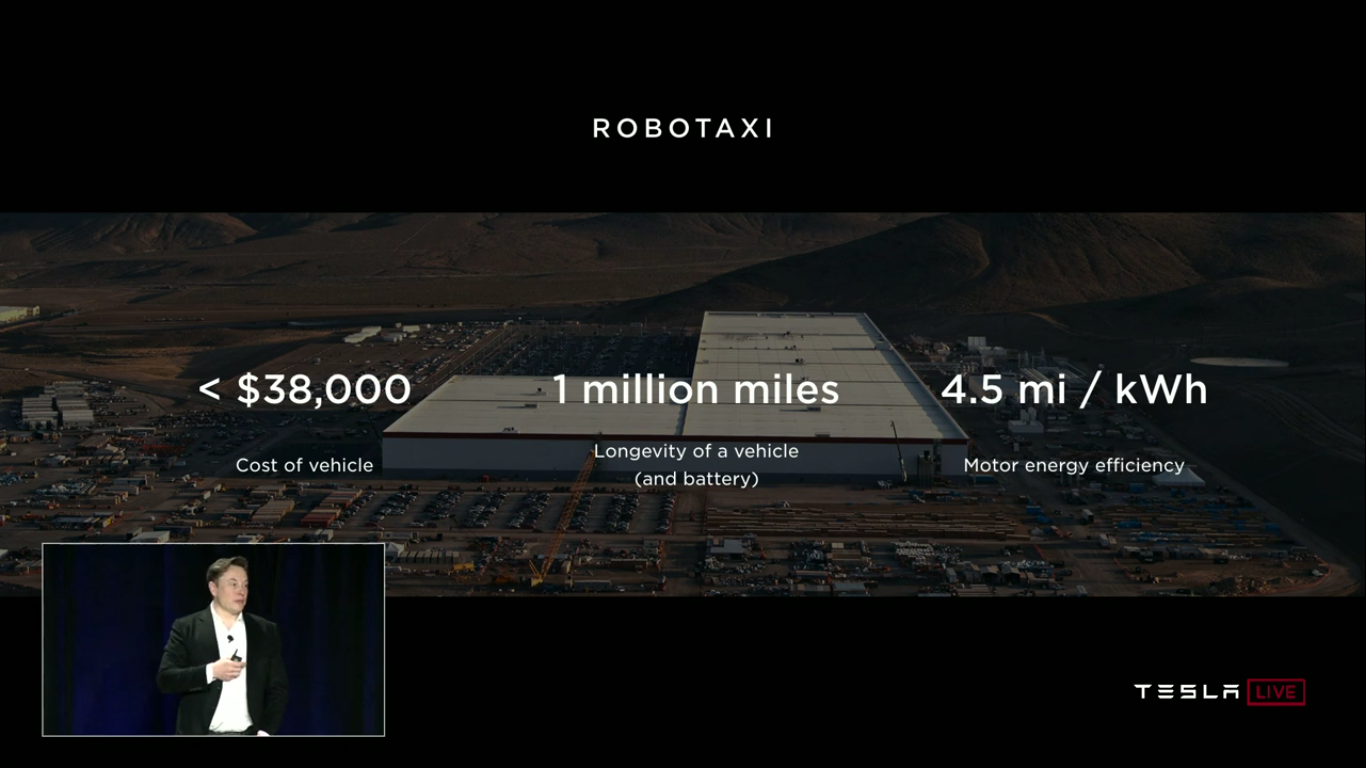Tesla Autonomy Investor Day: new Tesla FSDC (Full Self-Driving Computer), full autopilot, roboticaxi
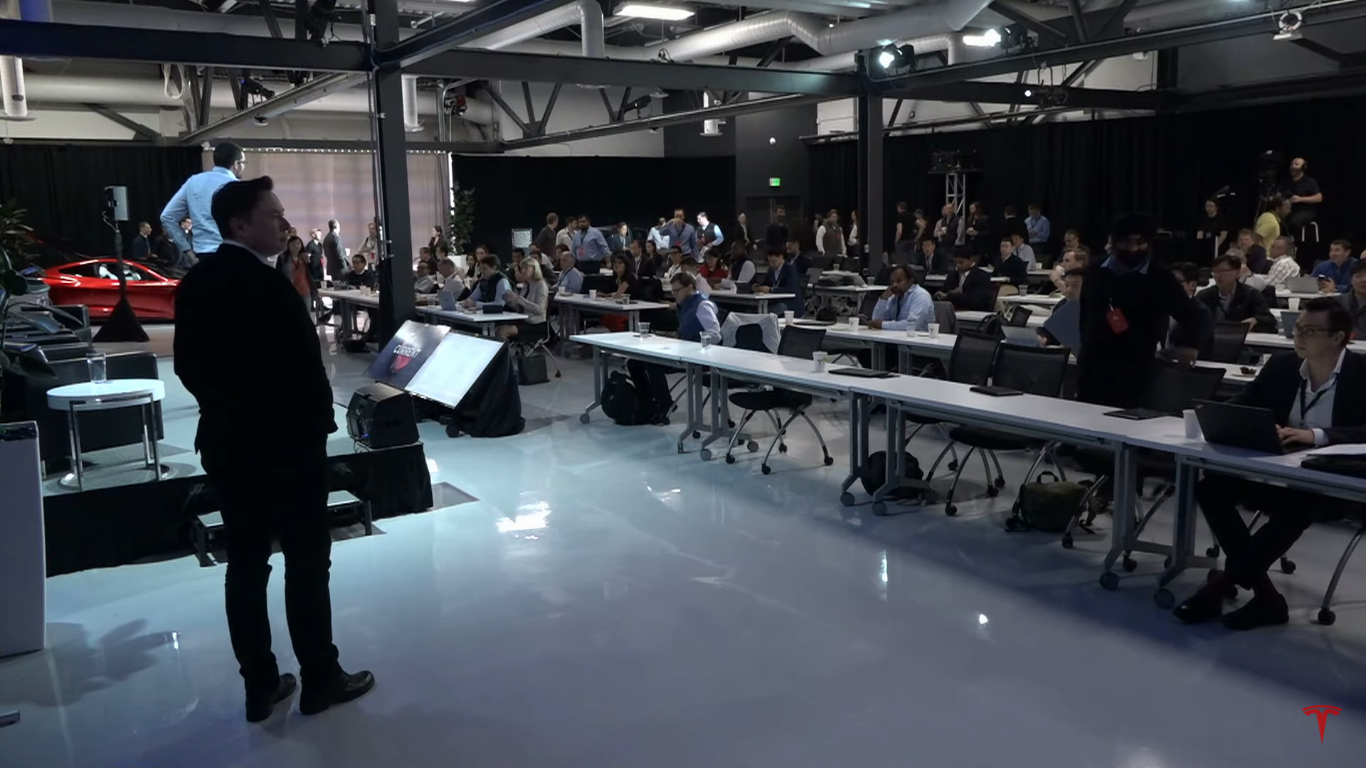
On the evening of April 22, 2019, Tesla Autonomy Investor Day, a special event for investors, was held at Tesla headquarters in Palo Alto, Santa Clara County, California, where (after spending several hours on stage) Ilon Musk and Tesla employees announced their new automotive supercomputer, announced the launch of a “full-fledged autopilot” and the Tesla Network robotics service, which will compete with Lyft and Uber.
The event itself in the video starts from 1 hour 10 minutes, and after three hours of broadcast there is a very interesting conversation with questions from the audience and the answers of Ilon Mask.
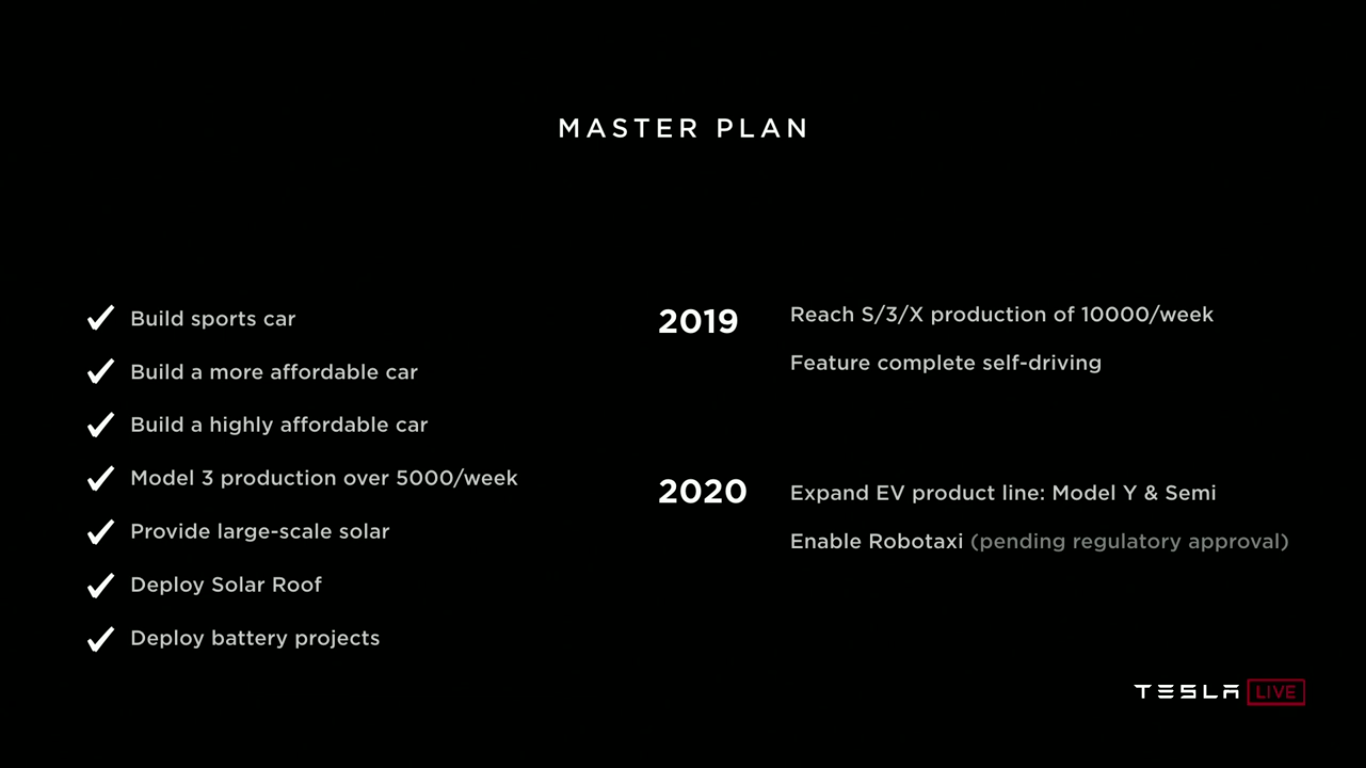
Tesla introduced a specialized car system on a chip (SoC) of its own design for the Tesla Full Self-Driving Computer (FSDC), formerly known as Autopilot Hardware 3.0.
The chip is packaged in a 37.5 x 37.5 mm BGA type case with 2116 ball pins and is manufactured using CMOS technology using the 14-nm FinFET process technology at Samsung manufacturing facilities in Austin, Texas.

The chip covers an area of 260 mm², contains 6 billion transistors and 250 million logic gates.
A dual neural module was placed on a common substrate (72 TOPS processing cores with a frequency of 2 GHz are concentrated in two blocks) for working with machine learning, artificial intelligence, 1 GHz GPUs and 600 GFLOPS (supporting FP32 and FP64 calculations), 12- a 2.2-GHz Cortex-A72 64-bit processor, as well as two dedicated hardware security units, one of which is responsible for verifying the authenticity of the executable software code signed by the Tesla cryptographic key.
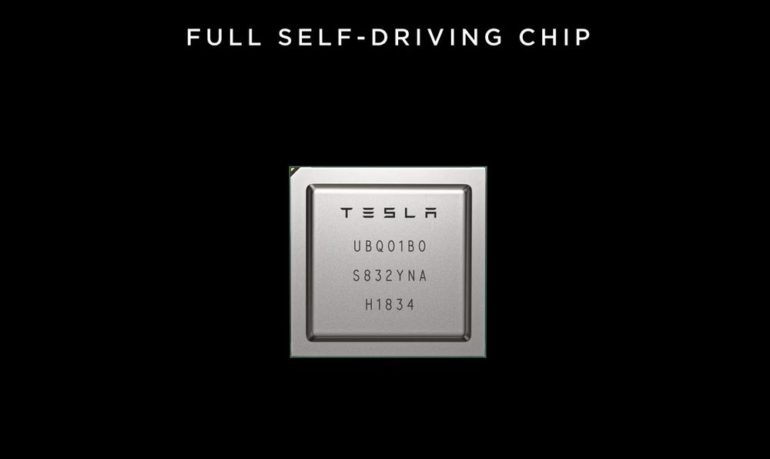
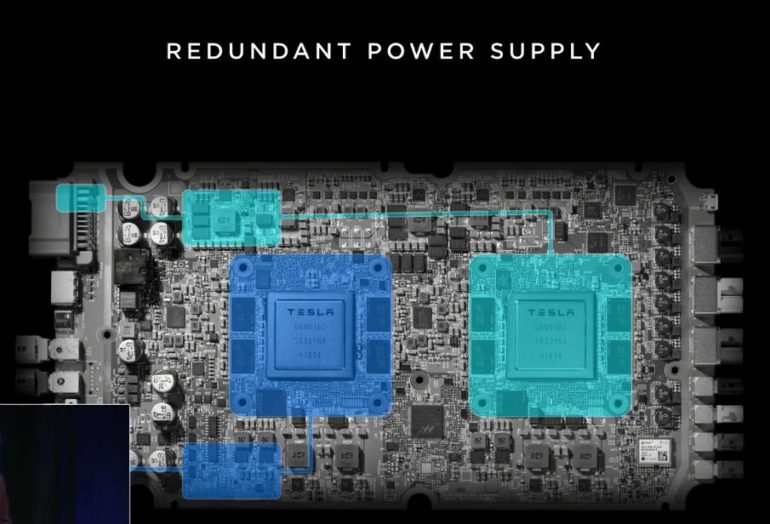
Two such chips are installed on the printed circuit board of the new Tesla FSDC computer, moreover, the second chip acts as a duplicate and can turn on at any time when one or more of the main components suddenly fail.
At the presentation, the head of Tesla, Elon Musk, said that the probability of a complete failure of this system is lower than the probability of a heart attack in the driver.
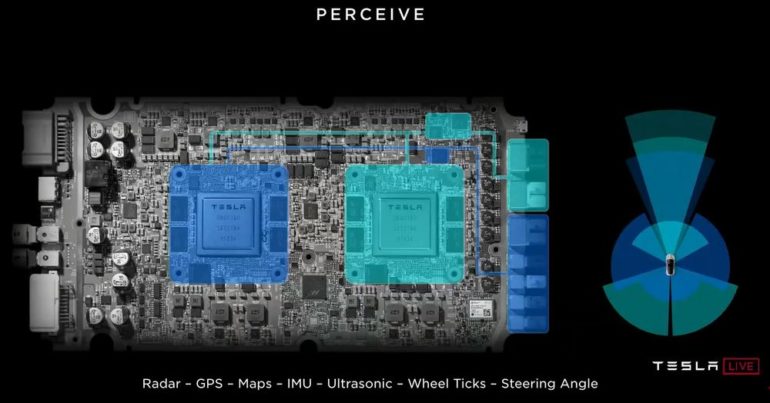
The new Full Self-Driving (FSD) on-board computer will replace the current HW 2.5 generation, built on the basis of the NVIDIA Drive PX 2 chip.
According to the manufacturer of the new on-board computer, the specialized dual neural module of the new platform is 21 times superior to its predecessor in performance in deep learning tasks , performing 72 trillion related operations per second.
And this despite the fact that it costs 20% cheaper and significantly more economical in terms of energy consumption (57 W versus 72 W for the predecessor).


During the presentation, Elon Musk said that Tesla engineers have already begun to develop the next generation automotive processor, which will be “three times better” than the current one. It is planned that he will be ready in two years.
The new Full Self-Driving Computer (FSDC) is one of the components of the Autopilot hardware platform.
The hardware of the Autopilot complex includes:
- the on-board computer responsible for processing all the data
- eight (8) cameras that create a panoramic picture around the car,
- twelve (12) ultrasonic sensors that calculate the distance to the obstacle,
- one (1) radar mounted in the bow.
Since 2016, all Tesla vehicles, including the younger version of Model 3, have been equipped with the above components.
During the presentation, Elon Musk said that lidars (3D laser scanners that allow to detect objects and determine the distance to them) used in many self-driving cars are already expensive and unnecessary technology for autonomous cars.
The head of Tesla said that lidar is a very expensive appendicitis, and soon everyone will realize this.
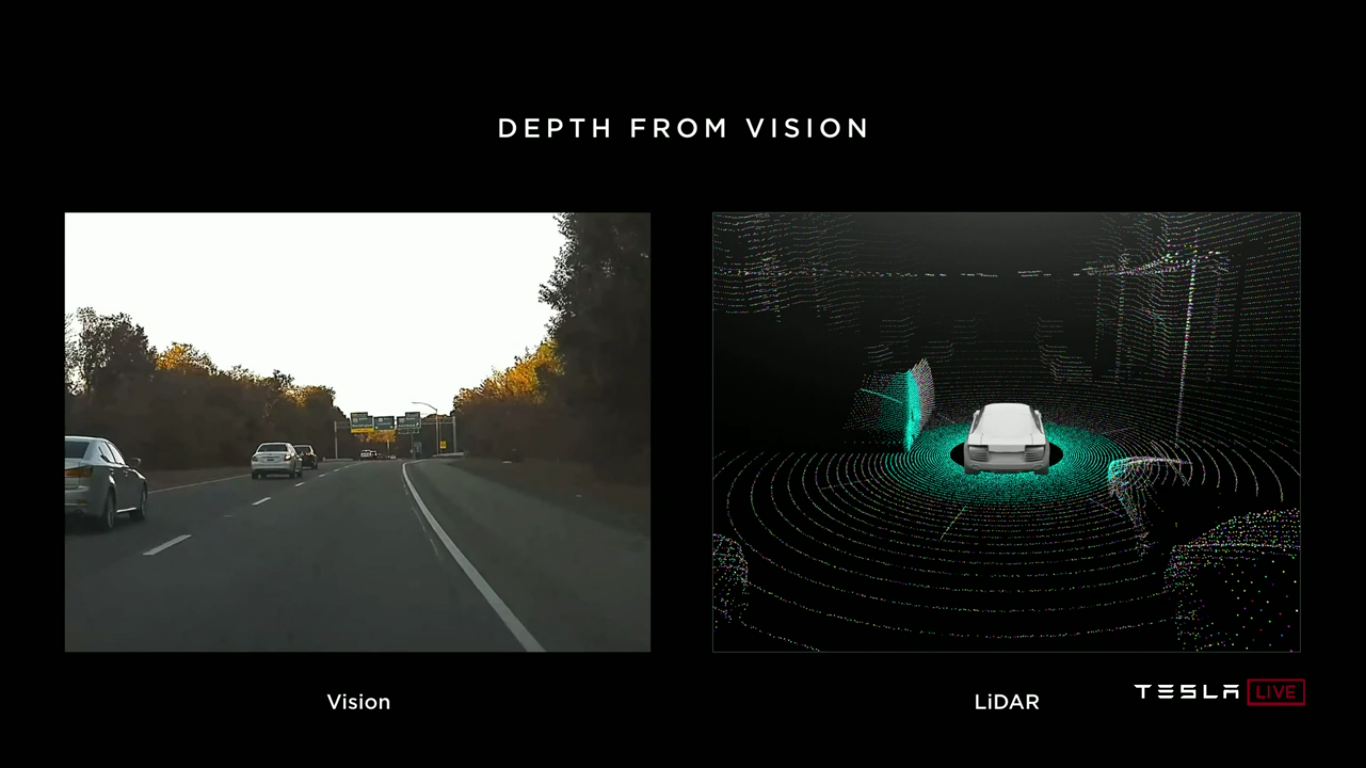

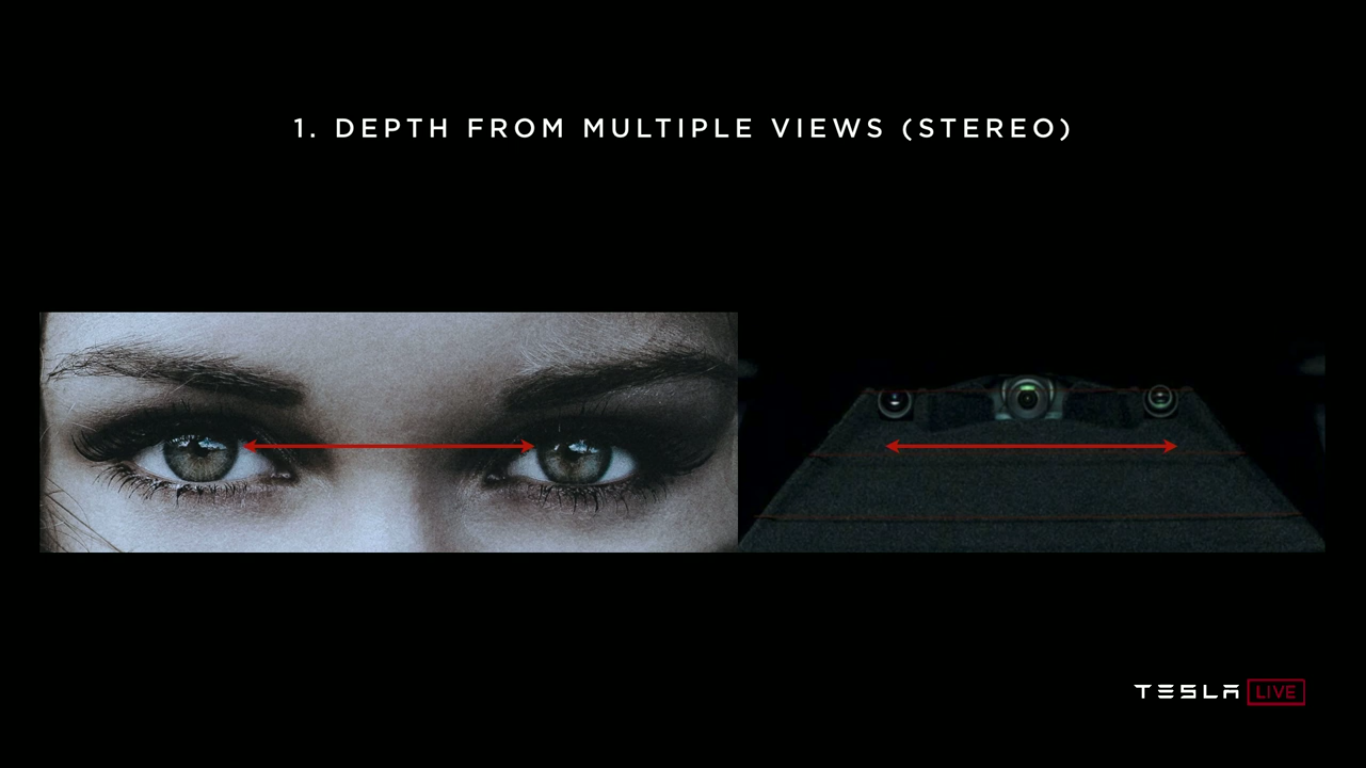
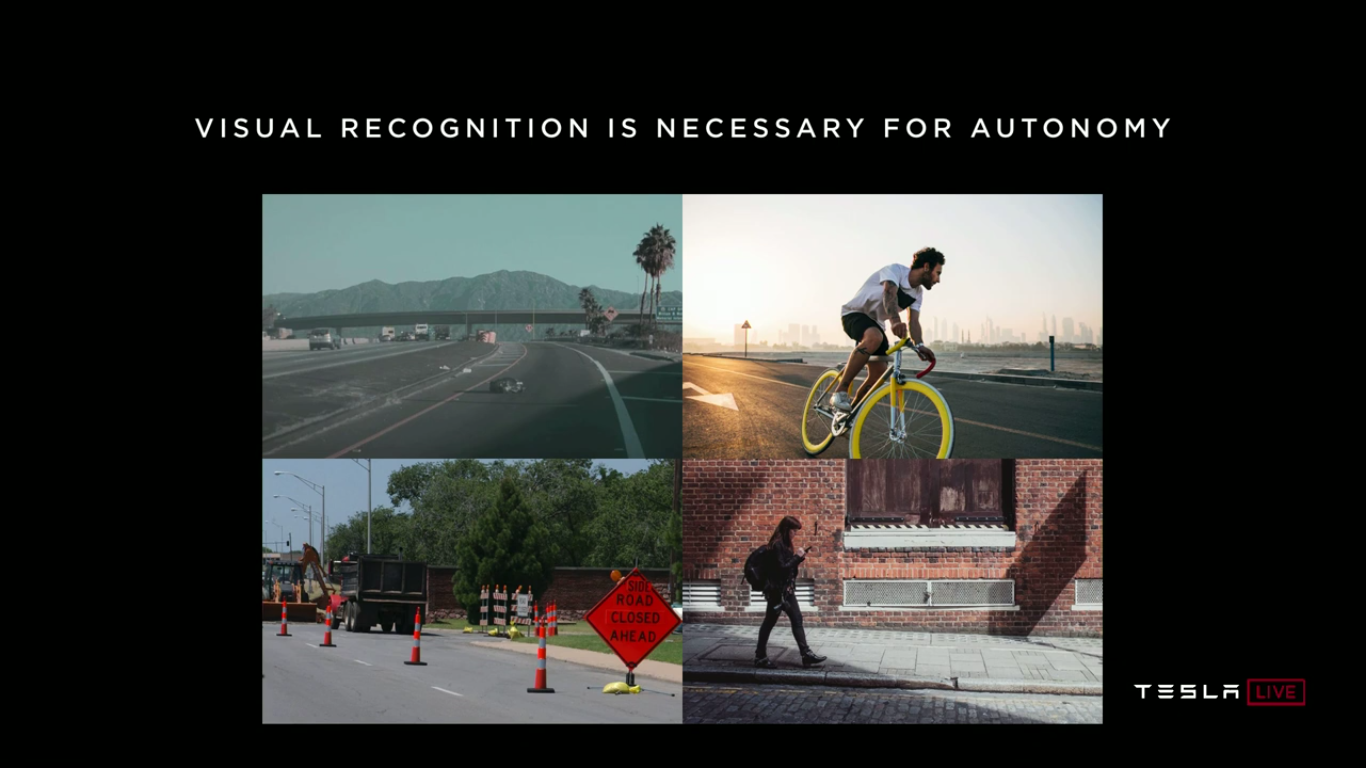

According to the head of the Tesla artificial intelligence unit Andrei Karpathy, ordinary camera images already contain all the necessary information about the distance to cars and objects on the road, it is only a matter of learning neural networks.
All new Tesla cars are already equipped with a new FSDC computer, and in the older Model S and Model X models it began to be installed after March 20, and in the younger Model 3 from April 12 this year.
Owners of previously released Tesla cars, who ordered the Full Self-Driving option, were promised in the next few months to replace the old on-board computer with the new FSDC for free.
It turns out that in 2016, Tesla hurried, saying that all her cars were equipped with the necessary hardware and software for free movement on general roads without human intervention.
Thus, it will not be possible to do without a hardware update on previously purchased cars.
The new FSD on-board computer will provide further expansion of the capabilities of the “full autopilot” Tesla. Here we are talking about the option of "fully self-driving" (Full Self-Driving).
Now Tesla Full Self-Driving cars can only independently drive on highways (under the constant supervision of the driver, of course), but at the end of the year, after a corresponding firmware update, they will begin to recognize the markings and traffic signals, so they can automatically navigate not only high-speed motorways outside the city, but also on roads within the city.
Elon Musk previously promised to realize this opportunity at the beginning of the year.
The head of Tesla noted that recently, Tesla Autopilot developers have been able to greatly develop the capabilities of the autopilot system, which is constantly learning based on real driving data collected from all Tesla vehicles, including data on accidents and incidents.

To date, Tesla cars worldwide have hit a total of more than 70 billion kilometers.
This is a huge array of data that has been processed by neural networks, ensuring the operation of the Tesla autopilot.
Elon Musk noted that as soon as Tesla receives the necessary permission from the regulator, it immediately “moves the switch” and all cars with Full Self-Driving simultaneously learn how to move independently on city streets (so far it is only about the USA).
It should be noted that Full Self-Driving is the marketing name for the extended package of autonomous driving capabilities.
Now the Full Self-Driving option costs $ 5,000 when added at checkout and $ 7,000 when the buyer unlocks this option after buying a car.
Last week, Tesla was warned about the rise in price of this option from May 1, 2019.
An expanded set of Full Self-Driving functionality includes:
- self-parking and on-call access to the owner (Autopark and Summon functions),
- functionality of Navigate on Autopilot, which is responsible for selecting the most optimal route to the destination with the Autopilot function active,
- Autosteer Stop Light Warning feature.
In 2016, Elon Musk, in terms of Tesla's development, envisioned the launch of an electric car sharing service that will allow Tesla car owners to receive passive income by renting their cars for downtime.
And now, three years later, in 2019, at Tesla Investor Autonomy Day, they announced the launch of their own Tesla Network robotics service.
This service will allow owners of electric vehicles to rent them to other drivers at unused time.
Tesla is going to release a special mobile application for this service, and it is planned to launch full-fledged functionality for Tesla owners who want to rent their cars in 2020 in test mode in several regions of the United States.
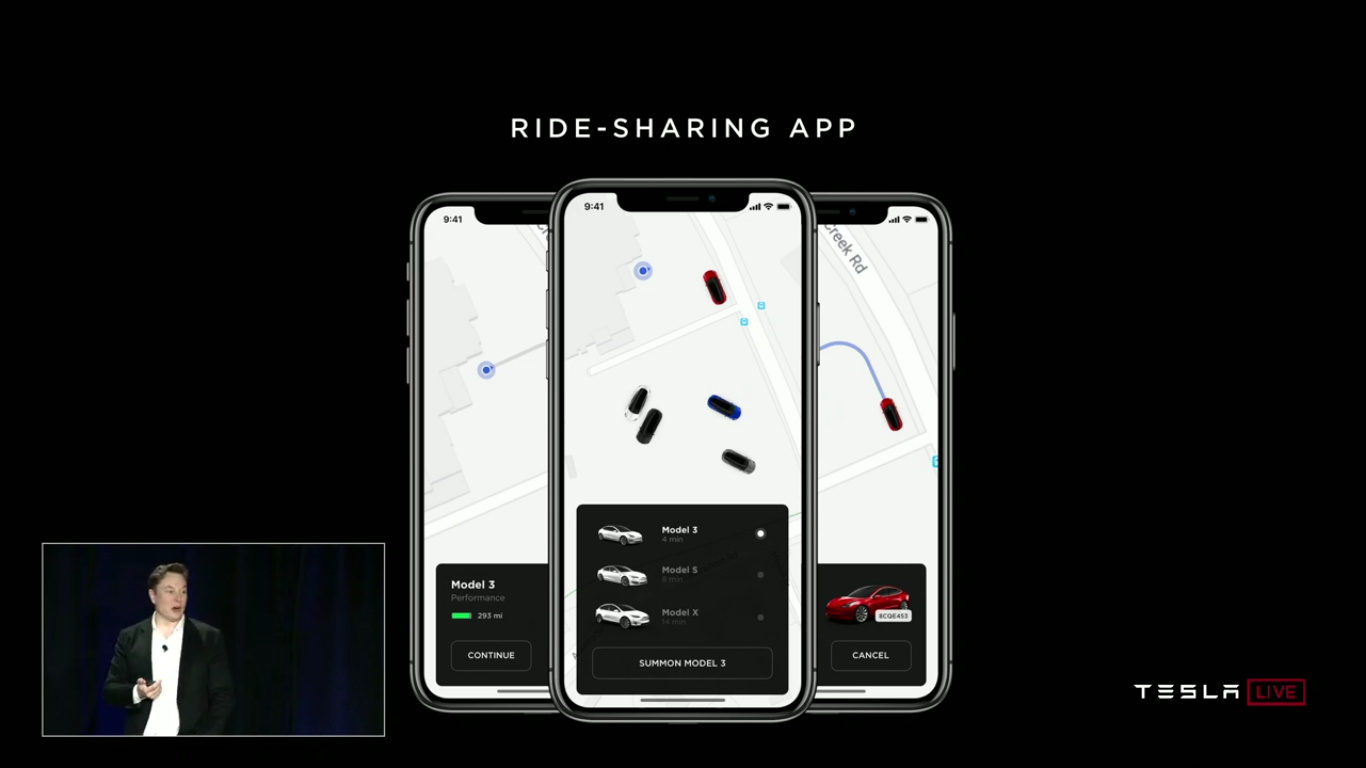
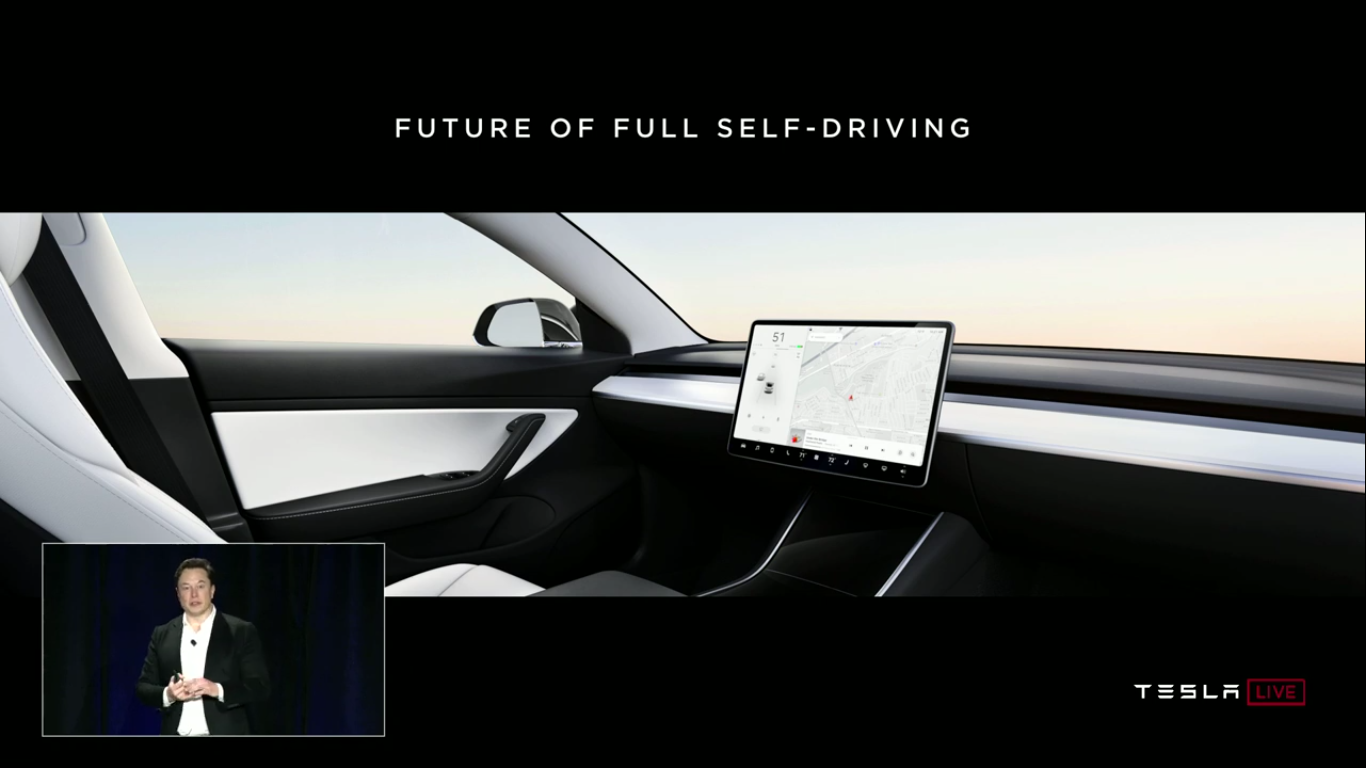
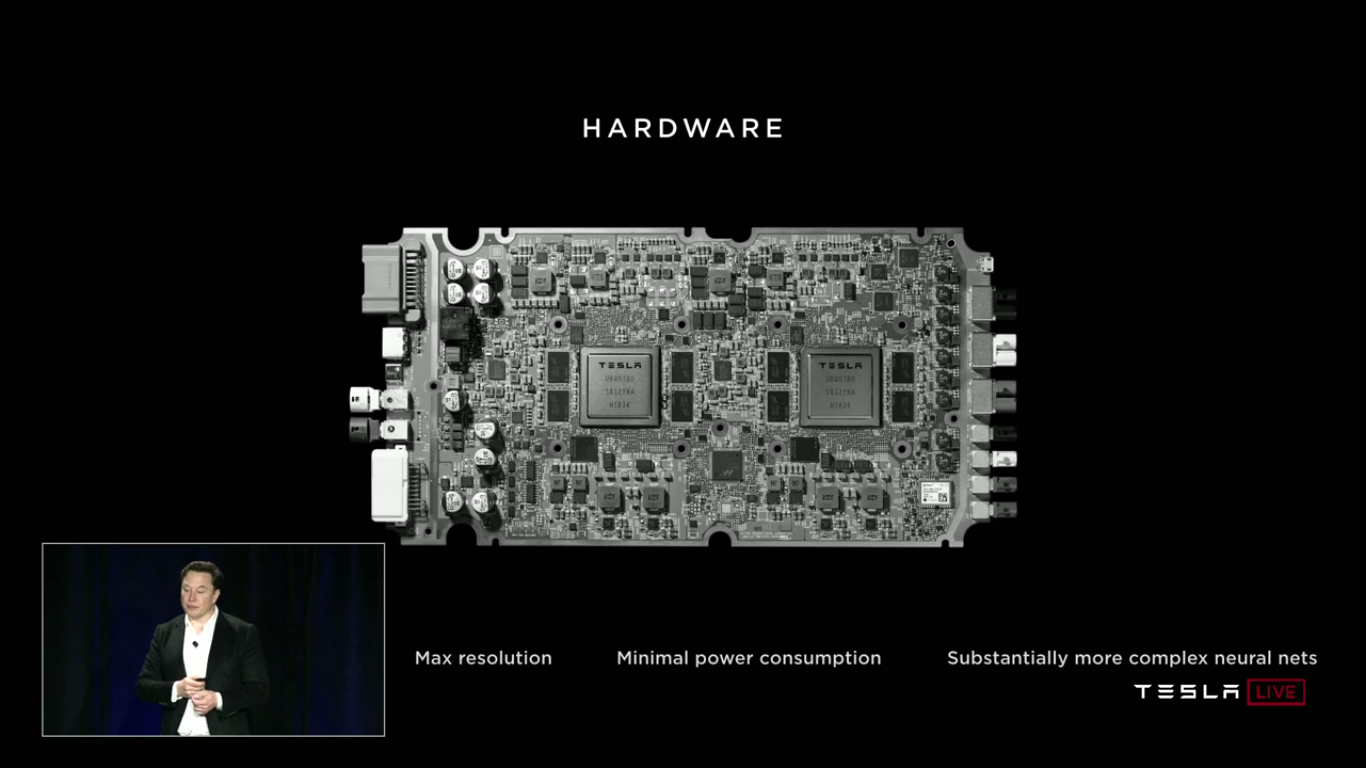
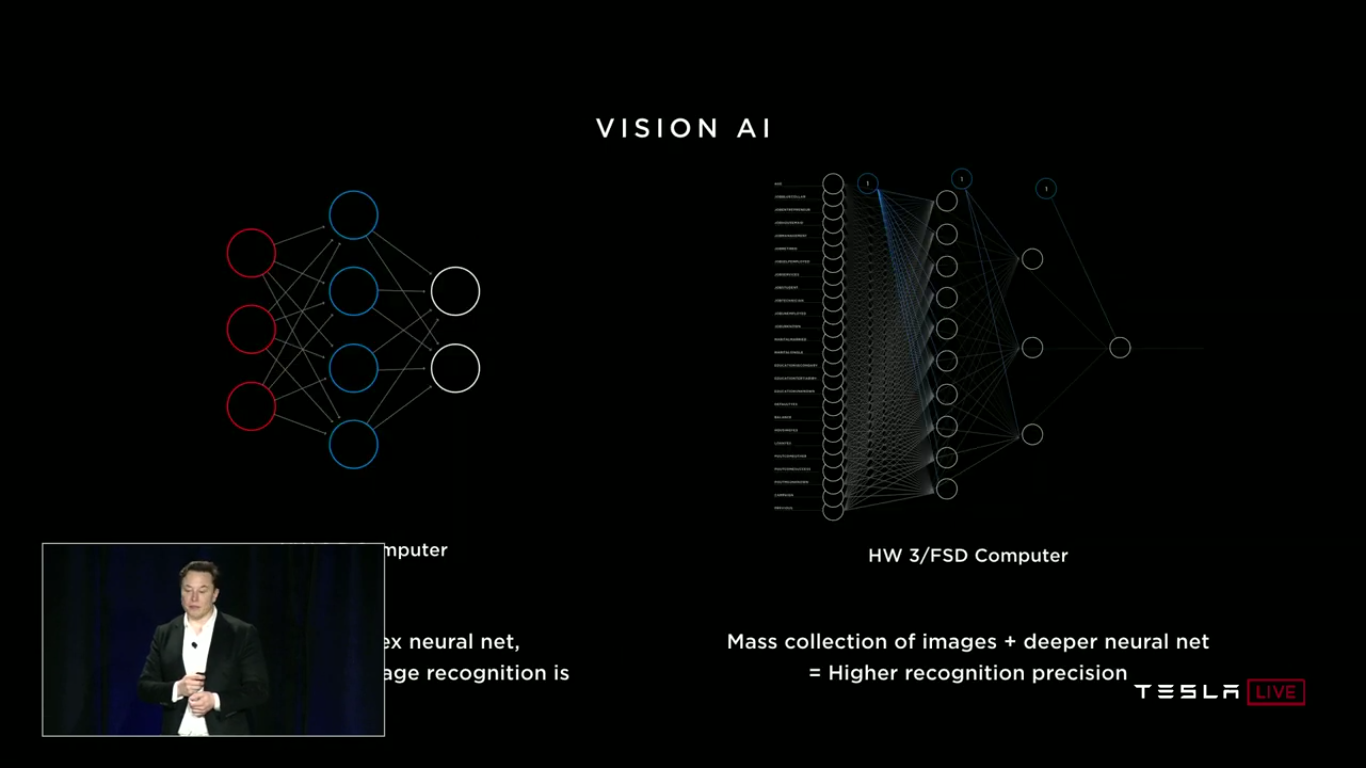



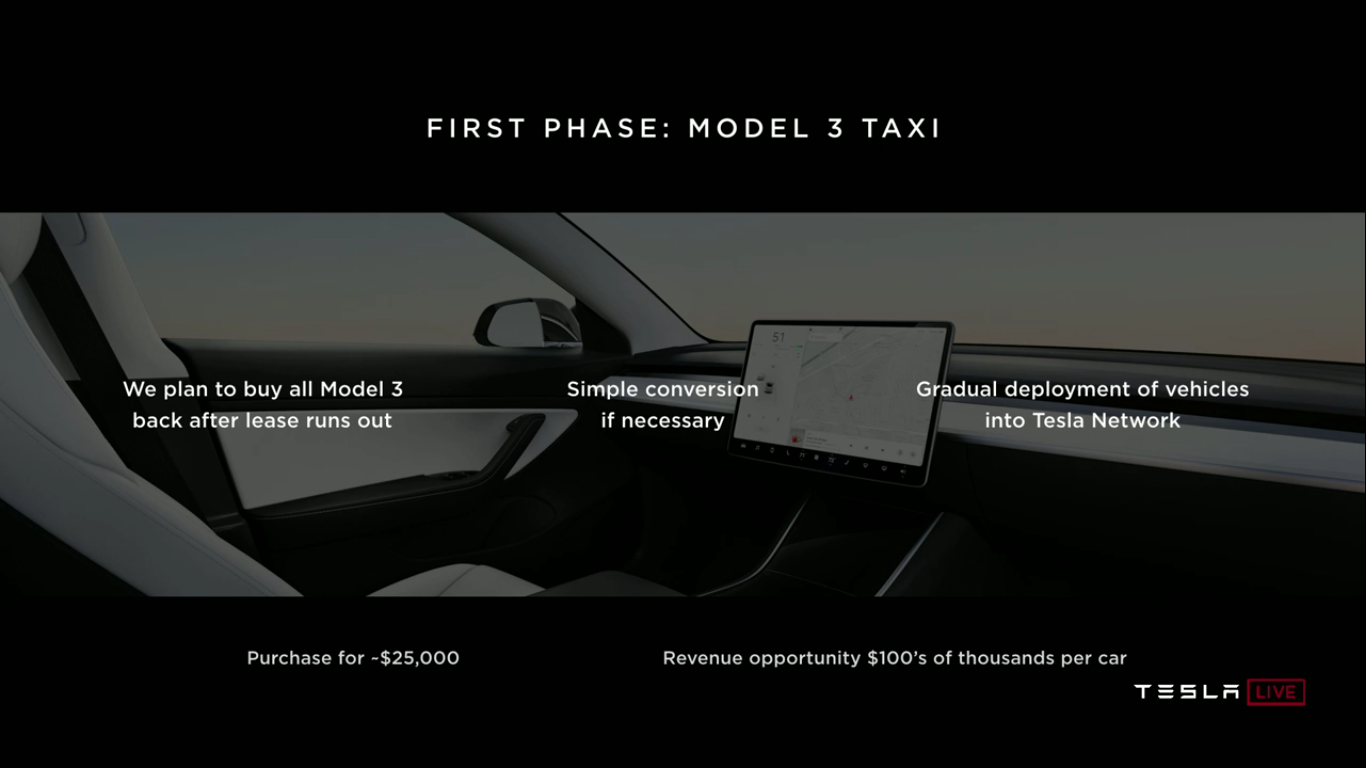
As part of this roboticax service, Tesla owners will be able to set the time when they can take their car, as well as limit the circle of people who are allowed to use the car, for example, friends or family members.
At any time, the car owner will be able to add or remove his car from the Tesla Network.
In addition, Tesla plans to replenish its robotax fleet on its own, including through leasing cars, hoping that up to 1 million electric vehicles will connect to the service in the next year and a half.
The cost of a trip on a self-driving Tesla with an autopilot of the highest fifth level will be $ 0.18 per mile.
For comparison, the average cost of a trip to conventional car sharing services is now $ 2-3 per mile.
According to Tesla, renting a car, owners will be able to additionally earn up to $ 30 thousand per year. Tesla plans to take 25-30% of the commission on revenue from owners.
Also, Tesla plans to increase the survivability of their cars.
It turns out that the drive subsystems and the Tesla Model 3 body were created with a margin of safety like a commercial truck capable of driving a million miles (over one and a half million kilometers) without any significant breakdowns.
During the presentation, Elon Musk promised that soon Tesla will start producing cars that can drive over one and a half million kilometers with minimal maintenance costs.
Elon Musk:“The main message of today's meeting that I want to convey is that buying any car other than Tesla is a rash decision. It's like buying a horse. ”


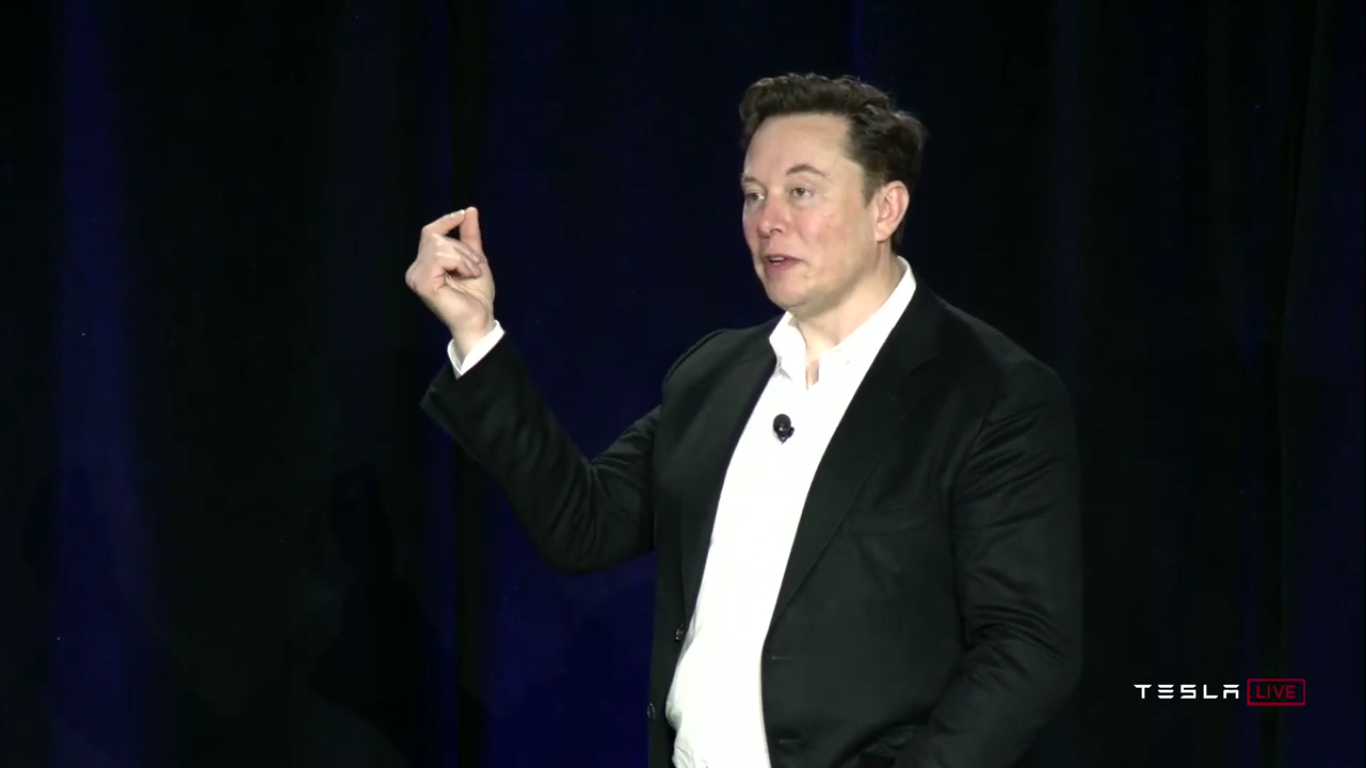
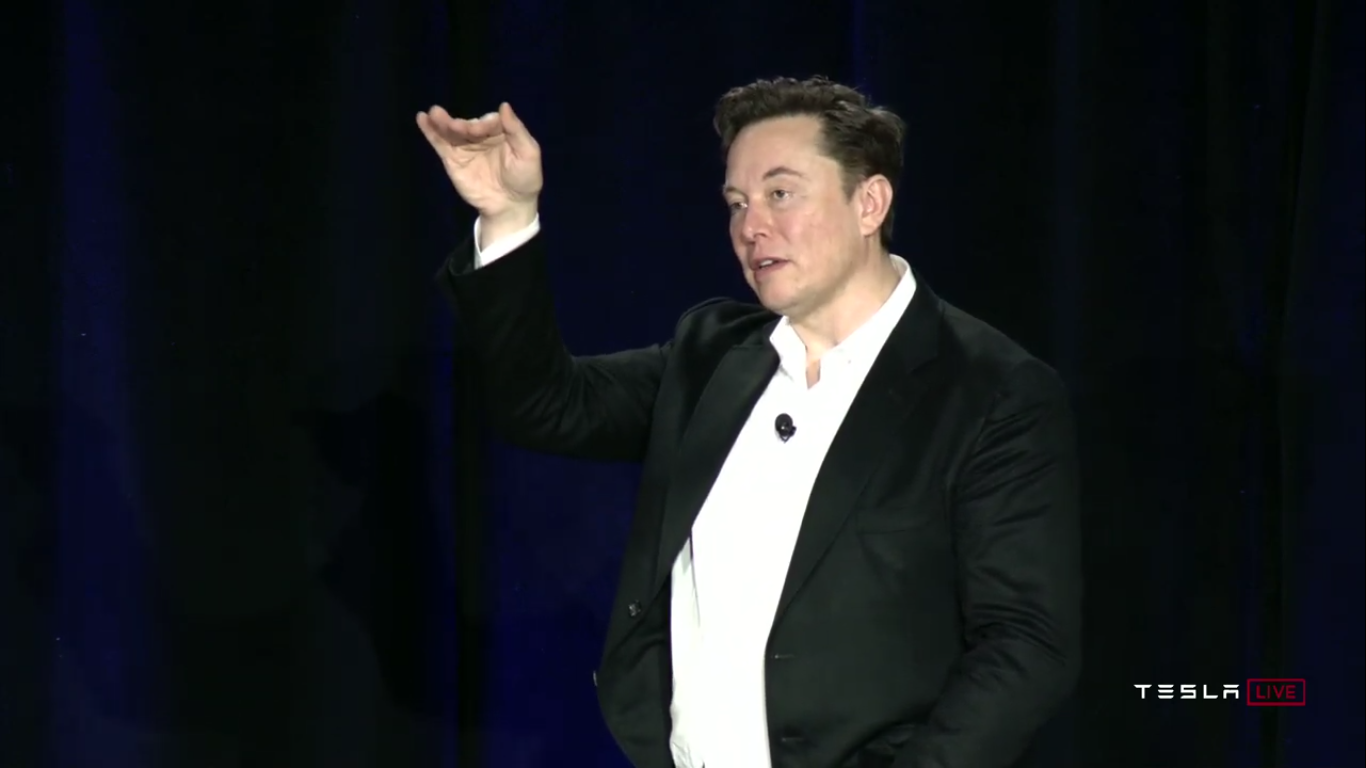
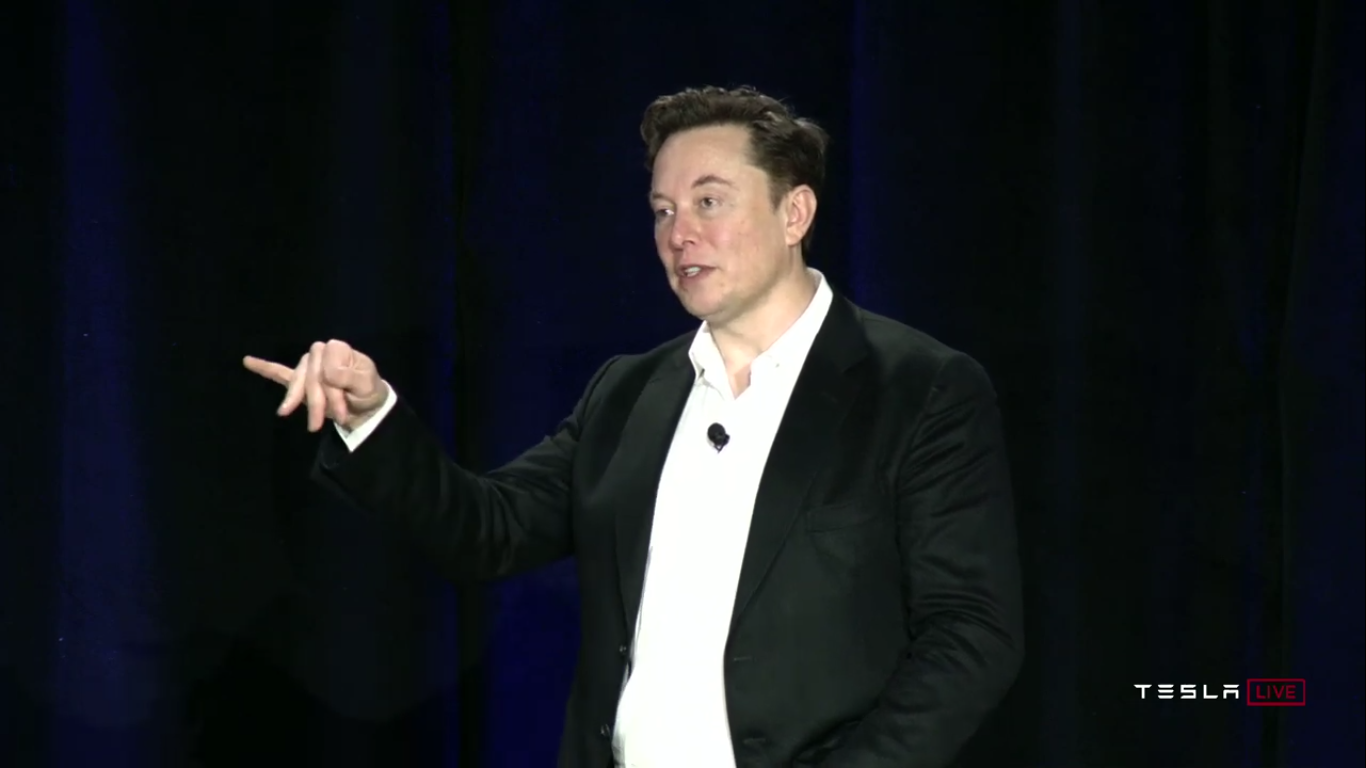
Photos from the event here

